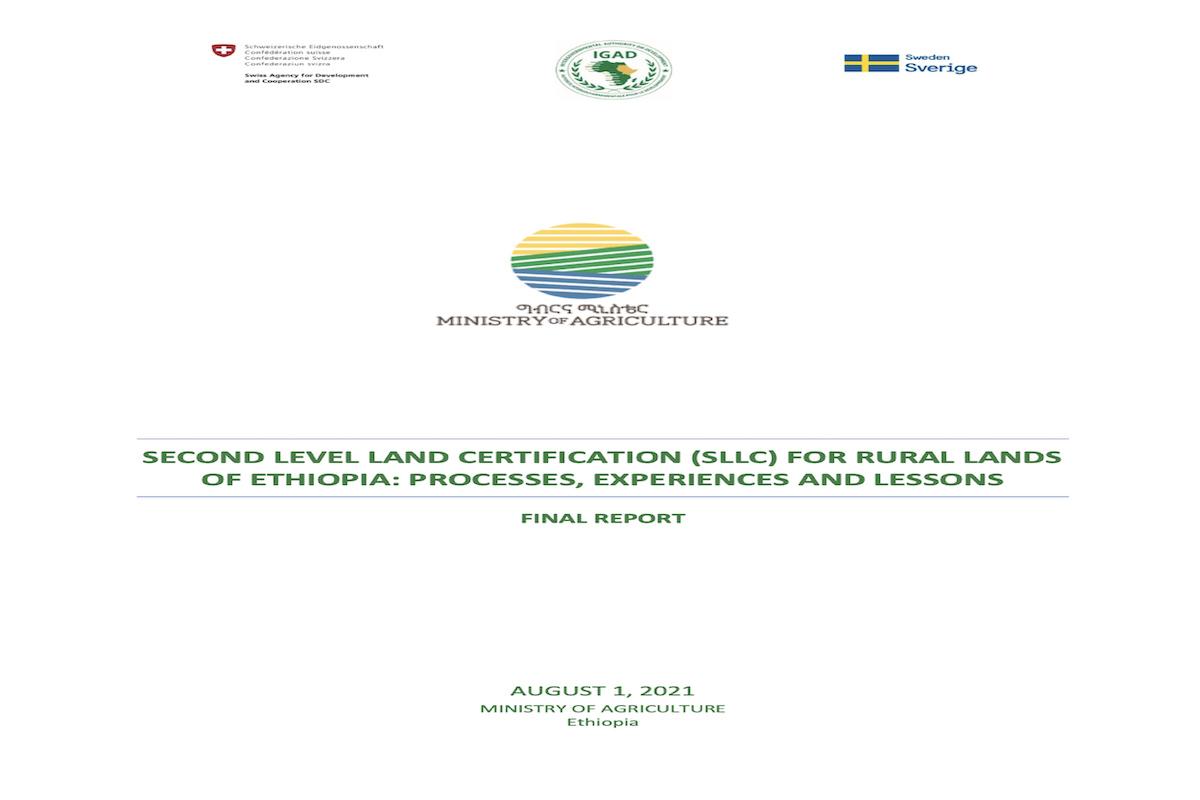
- Version
- Download 314
- File Size 986.44 KB
- File Count 1
- Create Date September 10, 2023
- Last Updated September 10, 2023
SECOND LEVEL LAND CERTIFICATION (SLLC) FOR RURAL LANDS OF ETHIOPIA: PROCESSES, EXPERIENCES AND LESSONS
To address the long and deep seated tenure insecurity problems of smallholder farmers inhabiting the highlands parts of the country , the Government of Ethiopia ( GoE) initiated the First Level Land Certification (FLLC) in 1998 in four regional states of the country; Amhara, Oromia, the Sothern Nations, Nationalities and Peoples (SNNP) and Tigray regional states .The implementation of FLLC was pioneered in Tigray regional states in 1998 followed by Amhara, Oromia and SNNP regional states. Within a period from 1998 to 2010, first level land certificates were issued to about 73 % the total rural household in the above four regional states (MoA,2011).
The rapid speed, participatory nature, low-cost, pro-poor and the positive impacts of FLLC are described as remarkable success with lessons to be shared with other African countries (Deininger,2007). Cost/parcel is estimated to be USD$ 1.0/parcel, which is cheaper than “low cost” procedures reported elsewhere (Deininger,2007). Notwithstanding the success, among others, the FLLC approach lacked spatial framework data in the cadastral data sets with procedural deficiencies to maintain and update the rural land registry record. As an upgradation of the FLLC, a Second Level Land Certification (SLLC) was initiated as of 2002 with piloting trails supported by different donor agencies.
Attached Files
| File | Action |
|---|---|
| Second Level Land Certification for Rural Lands of Ethiopia.pdf | Download |